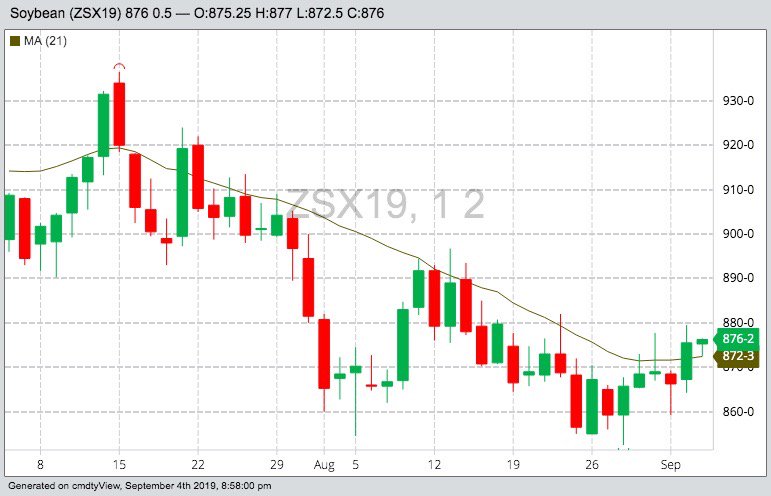MarketsFarm — Chicago Board of Trade corn futures fell to fresh contract lows during the week ended Wednesday, but could be running out of room to the downside amid concerns over the lateness of this year’s U.S. crop.
“The weather is benign and the government is telling us there’s really no problem with the crop,” said analyst Preston Zacharias of CHS Hedging’s Russell Consulting Group in Minneapolis, accounting for the softness in futures.
December corn settled Wednesday at $3.585 per bushel (all figures US$). While some analysts still see $3.30 as a possible target, Zacharias expected the low in the December 2018 corn contract of around $3.48 would likely provide support.
Read Also

Alberta crop conditions improve: report
Varied precipitation and warm temperatures were generally beneficial for crop development across Alberta during the week ended July 8, according to the latest provincial crop report released July 11.
“We have less stocks going in and a smaller crop, so I don’t think we need to be lower than that,” he said.
“There’s a lot of this crop that has a long, long way to go,” said Zacharias. He noted that much of the corn crop was planted late this year, with fields north of Interstate Highway I-80 “at a big risk of not making it to maturity.”
(I-80 runs across the U.S. from northern California to New Jersey through Toledo, Omaha, Des Moines, Cheyenne and Salt Lake City.)
The U.S. Department of Agriculture releases updated supply/demand estimates on Sept. 12, but Zacharias didn’t expect to see any significant adjustments to the yield estimates until October or November.
“We’re probably two months away from getting news that will shake this bearish attitude away,” he said.
For soybeans, large old-crop carryout is looming over the market, but delayed crop development should also provide underlying support.
With an estimated 60 million acres of the U.S. soybean crop seeded after June 1, “you won’t get any 80 bushel yields out of that stuff,” Zacharias said, adding “I think our bean yield will be significantly lower than what we’re being told at the moment.”
From a chart standpoint, the November soybean contract settled Wednesday at $8.755 per bushel. That marked the first time since mid-July that the contract settled above its 21-day moving average, which was mildly bullish, according to Zacharias.
“It’s a significant barrier that it has been respecting on the way down.”
— Phil Franz-Warkentin writes for MarketsFarm, a Glacier FarmMedia division specializing in grain and commodity market analysis and reporting.
















